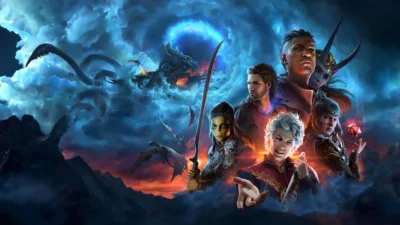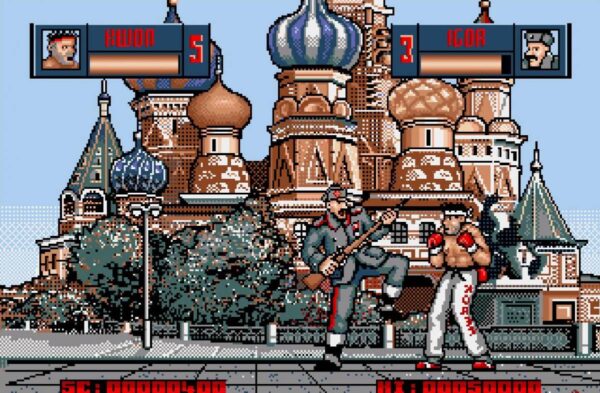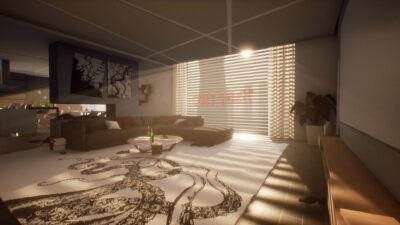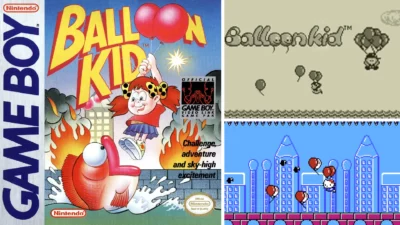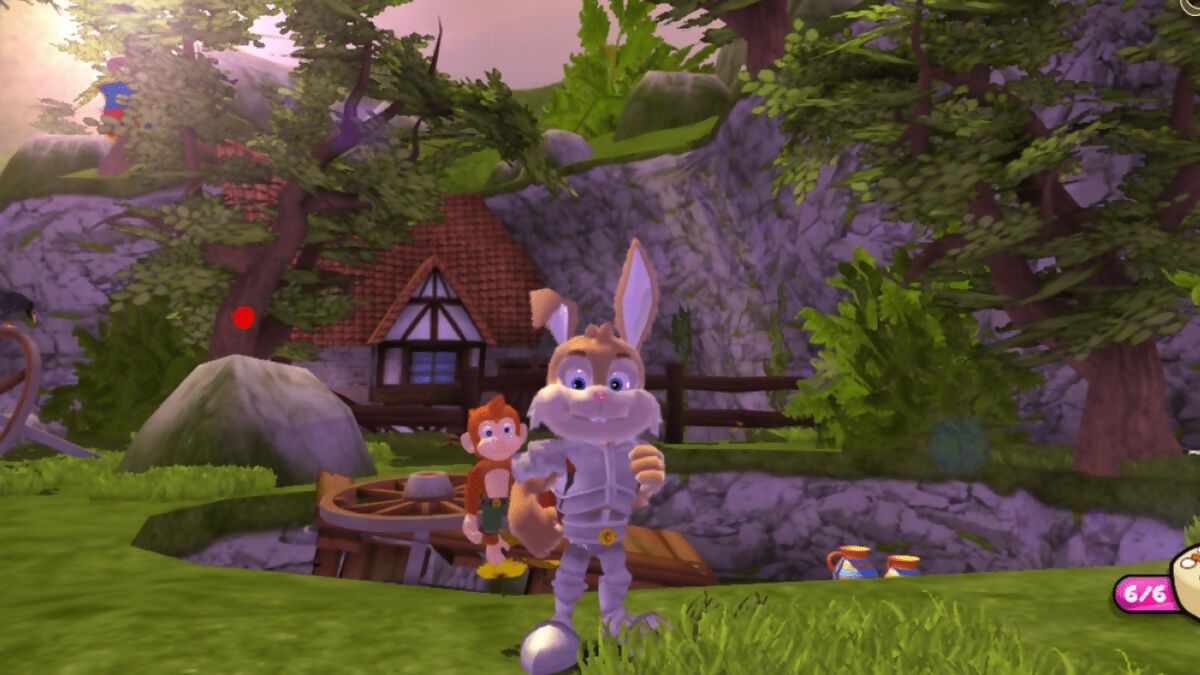
With the likes of Crash Bandicoot and Yooka-Laylee returning to consoles over the past year or so, the 3D platformer is enjoying a belated resurgence. That wasn’t the case back in 2011, though, when the apparent death of a once popular genre spurred graphic designer Rob Wass to try to make one of his own. “One day, I decided it’d be a laugh to just try myself,” Wass tells us. “If no one else is doing it, then why not me?”
Wass’s project, then, is a Unity-based action game in the mould of N64 hits like Banjo-Kazooie. Like that earlier hit, and its spiritual sequel Yooka-Laylee, Clive ‘N’ Wrench introduces a cartoon duo – in this case, Clive the rabbit and Wrench the monkey – who dash and leap around collecting things. The twist here is that Clive the rabbit can spin his monkey sidekick around his head, which allows him to extend his jump and float across impassable chasms – this comes in handy when you’re trying to collect, say, a key secreted on a hard-to-reach platform.
It’s an ambitious game for a solo developer – particularly one who’s never made a full game before. You only have to look at how in-game cameras evolved in 3D platformers of the early 1990s to the 2000s to see that it’s a tricky genre to get right. For every much-loved classic like Super Mario 64 or Jak and Daxter, there was a clunky, hard-to-control nightmare like Bubsy 3D or Jersey Devil.
“I was rather naive back then,” Wass admits. “I had no idea how big of a project I would be taking on at all. Pretty much every discipline has been a case of learning on the job, which may explain why the game has changed so drastically over its lifetime.”
For the past seven years, Wass has been reworking and honing his project. It’s had its ups and downs in that time, including a name change (it was once called Clive and the Stones) and two unsuccessful campaigns on Kickstarter. One major turning point came when Wass brought aboard character artist Luigi Lucarelli, who helped overhaul the game’s visuals and bring its style and overall polish closer to the Rare-developed platformers that inspired it.
Unity, meanwhile, has proved both a blessing and a curse over Clive ‘N’ Wrench’s long development; while it helped Wass get early builds of the game up and running without having to resort to too much fiddly coding (“I’m not the world’s best programmer by any stretch of the imagination,” he tells us), the job of moving the game from outgoing versions to new can, he says, “cause all manner of headaches.”
Thanks to the occasional spot of programming advice from friendly indie developers, though, Wass’s game has changed almost beyond recognition over the past six years. He’s worked hard at improving the physics and feel of the controls, and his time on Clive ‘N’ Wrench has also helped him gain a better understanding of level design.

“I was rather naive back then,” Wass says of his first few months on Clive ‘N’ Wrench.
Towards the finish line
“A big question I often ask myself when designing levels is, ‘is this too linear, or not linear enough?’” Wass says. “I try to make sure each level has a good enough mix of the two to allow exploration, but also to make sure the player doesn’t get lost or bored. Another big part of this is the need for landmarks: unique objects or locations that help a player to know where they are in relation to the rest of the level.”
In more recent years, Wass has used Patreon to help fund Clive ‘N’ Wrench’s development. This has meant that he’s been able to reduce his working days as a graphic designer from five days to four, giving him more time to devote to his passion project. As of autumn 2018, Clive ‘N’ Wrench is now progressing nicely; Wass’s father (who, handily, happens to be a composer) has written the music, and Wass estimates that the game is now about 75 percent complete.
“There is a finish line in sight,” Wass says; “I know how the finished article will look now, so it’s just a case of filling in the gaps.”
It’s been a long road for Clive ‘N’ Wrench, and its development has seen Wass progress from a self-described amateur to a fledgling indie developer. So, given all his experiences so far, what advice would he give to a budding designer thinking of starting their own game? One consideration, Wass says, is how and when you start showing off your work-in-progress – especially if you’re thinking of funding it via Kickstarter.

Artist Luigi Lucarelli has helped Wass transform the game’s visuals.
“It does seem that people are far less trusting of Kickstarter projects these days,” Wass says, “given the high number of missed promises, and disappointments. At the very least, my advice would be to have a solid vertical slice of your game done before launching that sort of campaign, or else you stand very little chance! Patreon on the other hand, has been fantastic, both for engagement and for finding the right people to help test out the game in its alpha form.”
Clive ‘N’ Wrench is currently pencilled in for a 2019 launch, although Wass hasn’t yet decided on a release date. Once complete, however, Clive ‘N’ Wrench will, Wass hopes, transport players back in time to the genre’s heyday.
“The goal was always to make as faithful a recreation of that time’s platformers as possible,” Wass says. “My hope being that if someone were to pick the game up without any prior knowledge, they’d be fooled into thinking it came out in 2004.”
Show us your game
Are you a solo developer working on a game you want to share with Wireframe? If you’d like to have your project featured in the magazine, get in touch with us at wfmag.cc/hello


